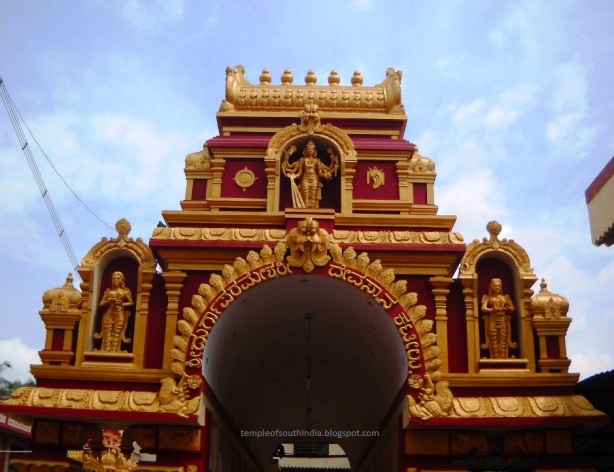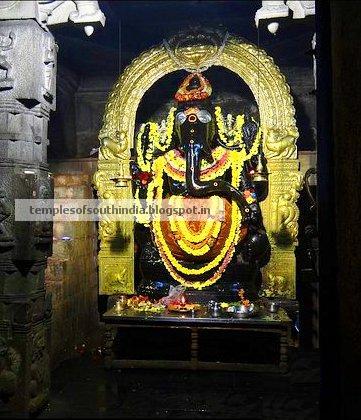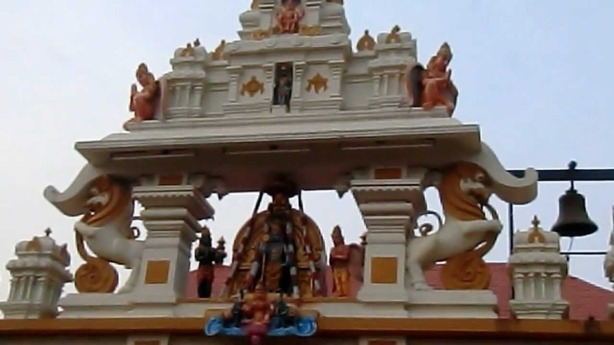Today I would like to talk about Sri Chennakeshava Temple in Somanathapura, Karnataka. The temple is one among the thousands of temples built by Hoysala Kings and depicts another exemplary work of Hoysala Architecture. The temple was consecrated on the banks of River Kaveri by the Dhandanakya of Hoysala dynasty called Somanatha in 1258 CE. (town named after its general Somanatha) Somanatha was an officer under the Hoyasala King Narasimha III (1254-1291 A.D.)

The temple is built on a star shaped platform within a closed courtyard with three symmetrical sanctums (garbha grihas), one each for Keshava, Janardhana and Venugopala. Currently only Janardhana and Venugopala statues can be seen and Keshava’s statue is missing. The temple also has a multiple pillar community hall (sabha-mantapa). The temple pillars, ceiling, inner and exterior walls are all carved with legends and spiritual stories from Ramayana, Mahabharata and Srimad Bhagavata. 
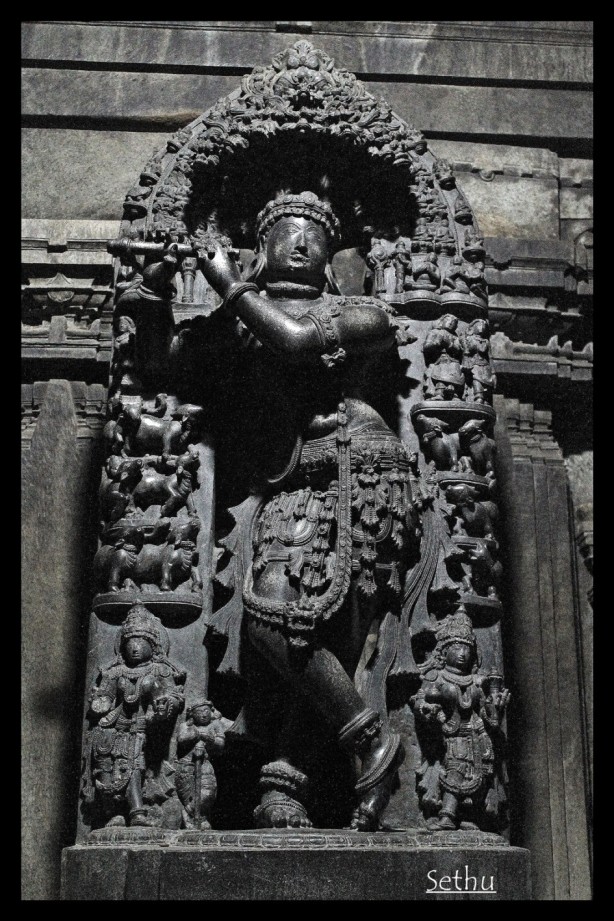
The basement band of the outer wall of main temple is ornamented with carved artwork of marching elephants, horses with armed riders, nature scrolls along with epic scene from Ramayana and Purana.
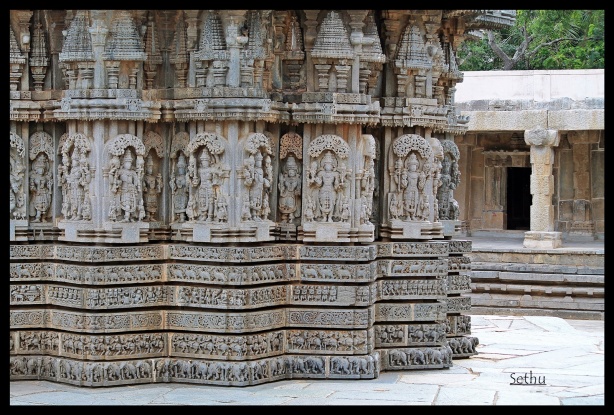

Above these bands sculptures of all the Vishnu avatar and other god and goddesses like Ganesha, Shiva, Saraswati, Lakshmi can be found. Temple mahadvara is to the east and as you enter the shrine (Navaranga) you can see beautiful lathe turned pillars and the roof consisting of 16 squares, each of it is elegantly carved in different designs.


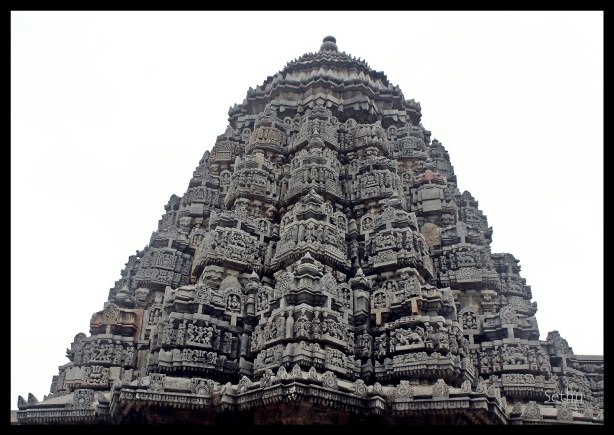
 Image source Images.Worthview.com
Image source Images.Worthview.com
The temple was damaged multiple times by many Muslim invaders and was repaired by the Kings of the Vijayanagar empire and in the 20th century by the Mysore government.
Artwork in Somanathapura temple resembles to the famous and beautiful Hoysala Architectural temples in Belur and Halebidu (which I’ll try to cover in my next post)
Somanathapura is around 130 kilometers form Bangalore and 35 kilometers from Mysore. KSRTC and Private buses run frequent service from Mysore.


